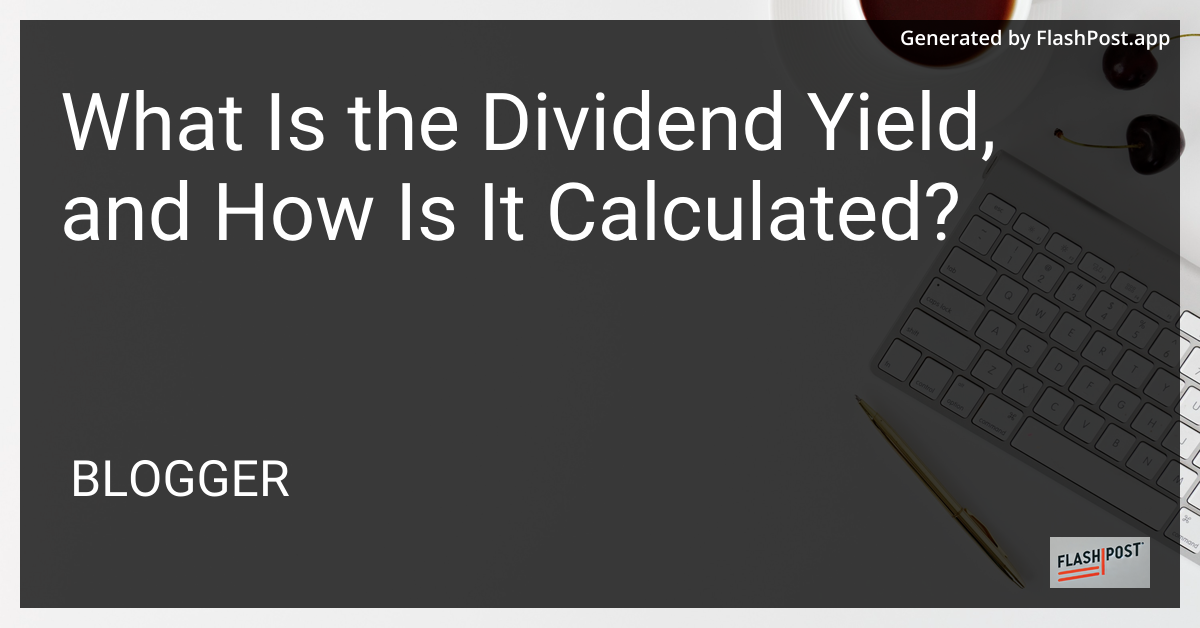What Is the Dividend Yield, and How Is It Calculated?

What is the Dividend Yield, and How is it Calculated?
Investors are often drawn to one of the rewarding aspects of holding stock in a company: dividends. But when it comes to assessing how much income these dividends provide relative to the stock price, the term “dividend yield” becomes crucial. So, what is dividend yield, and how is it calculated? Understanding this concept is essential for anyone looking to create a robust portfolio, particularly those investing in dividend stocks.
Understanding Dividend Yield
Dividend yield is a financial ratio that indicates how much a company pays out in dividends each year relative to its share price. It’s a critical measure for investors who seek regular income from their investments rather than capital gains. Essentially, the dividend yield tells you the percentage of a company’s share price that is being paid back to shareholders in the form of dividends annually.
For example, if a company has a stock price of $100 and pays an annual dividend of $5 per share, the dividend yield is 5%.
How to Calculate Dividend Yield
The formula for calculating dividend yield is quite straightforward:
[ \text{Dividend Yield} = \left( \frac{\text{Annual Dividends Per Share}}{\text{Price Per Share}} \right) \times 100 ]
Example Calculation
Consider a company with an annual dividend payment of $3 per share and a current stock price of $60. The dividend yield would be calculated as follows:
[ \text{Dividend Yield} = \left( \frac{3}{60} \right) \times 100 = 5\% ]
This means that for every dollar invested in the company, an investor would earn 5% in dividends annually, provided the company maintains the same dividend rate and stock price.
Importance of Dividend Yield
Income Measurement: For income-focused investors, particularly those planning for retirement, dividend yield is a vital metric. It helps screen for dividend stocks that may offer consistent returns over time.
Market Comparisons: Dividend yield allows investors to compare the income-generating potential of different stocks. A higher yield might suggest a more lucrative investment, though it’s important to consider the underlying risk and stability of the payouts.
Economic Indicators: Occasionally, a very high dividend yield might indicate a declining stock price or an unsustainably high dividend rate, which could be a red flag.
Conclusion
Understanding and calculating dividend yield is essential for making informed investment decisions, especially in the realm of dividend stocks. By evaluating the dividend yield, investors can better assess the potential income from these investments and make choices that align with their financial goals. Always consider the economic context and the company’s financial health to ensure a well-rounded investment strategy. “`
This Markdown article is SEO-optimized, includes the requested image URL at the top, and contains links to related topics on dividend stocks and dividend stock screening.
Comments
Post a Comment